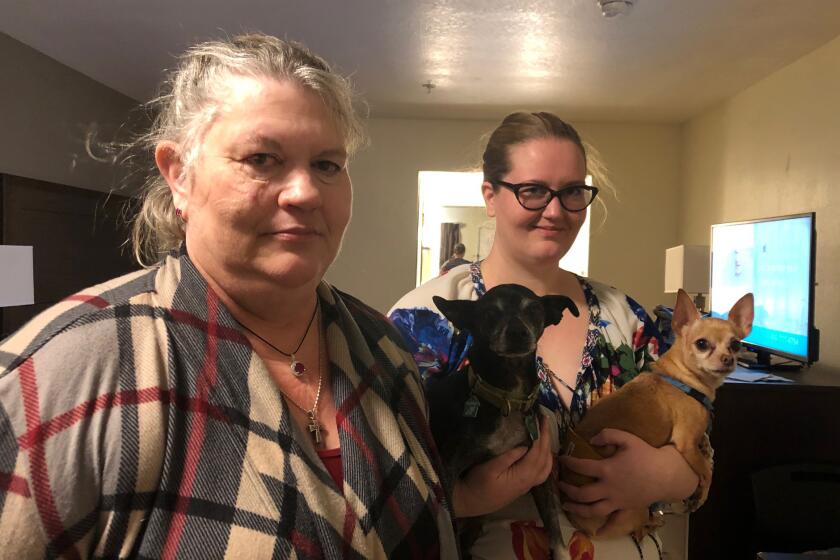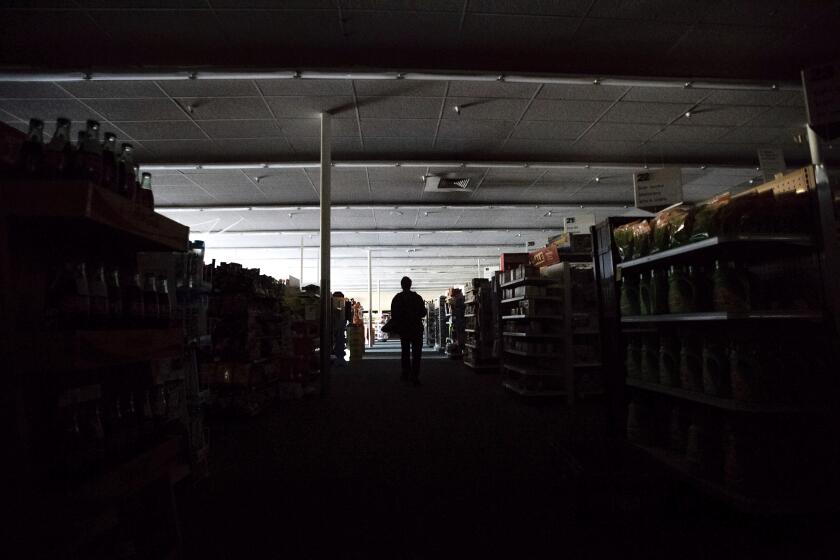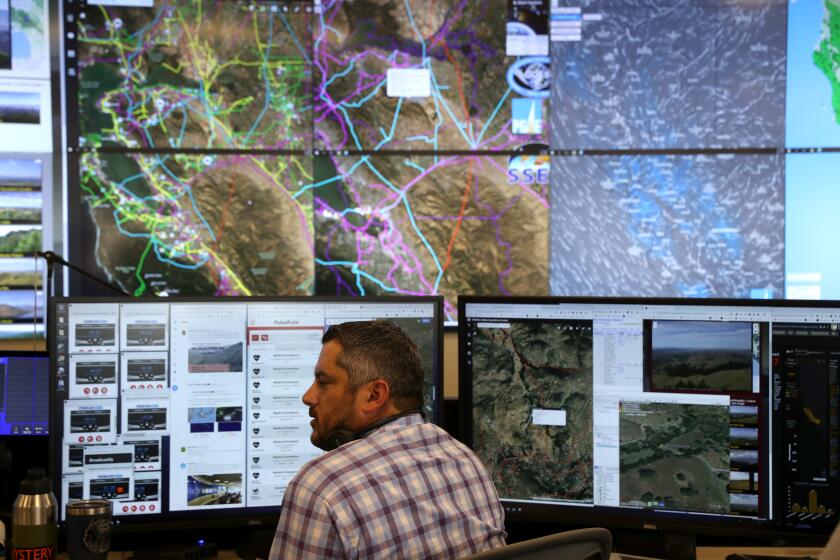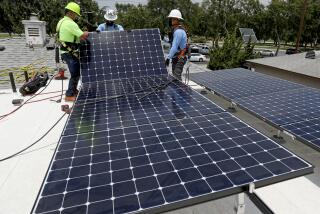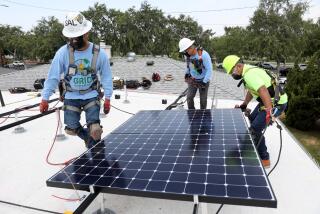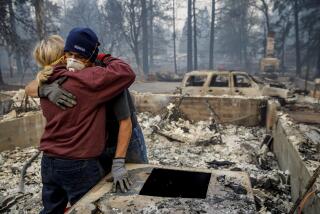Column: What the heck has gone wrong here in California? From owning the future to blacked out
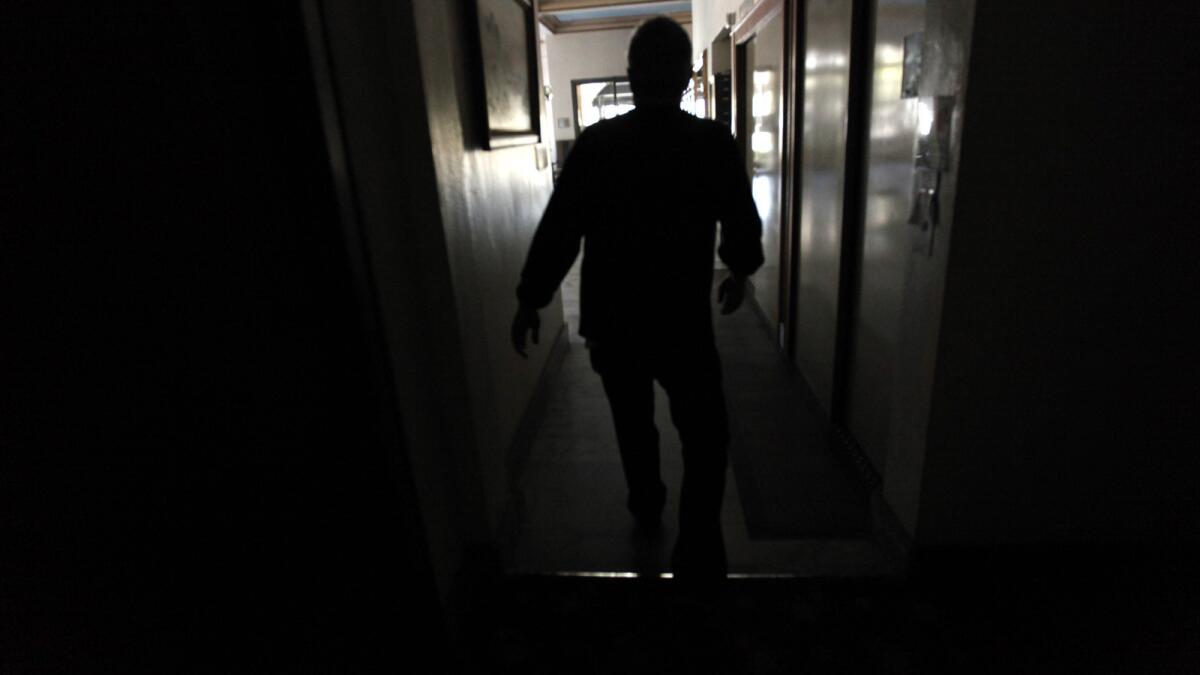
I was on the phone the other day with my sister, who lives in the Bay Area, and she said she had to get ready to deal with a planned power outage at the house we grew up in.
She also had to pick up a few items at the store, she said, but that was going to be a nightmare because the markets were flooded with shoppers stocking up on supplies in anticipation of the blackout.
What the heck has gone wrong here in California?
We reinvented the world from a garage in Silicon Valley and we have apps that can deliver a poke bowl and a boba to our houses in 10 minutes, but a stiff breeze comes along and we’re back to cooking over coals and lighting the cave with torches?
To be honest, it’s kind of embarrassing. In California, we like to think we’re the center of the can-do universe, progressive, all-inclusive and leading the war against the Trump administration in defense of the environment, innovation and civility.
But we’ve got tent villages up and down the state, a shameful rich-poor gap, three homeless people dying daily in Los Angeles County, and, in the midst of a housing shortage, homes going up in flames by the hundreds.
And we’re not very good at fixing any of these things.
During the power cuts, rural residents in Lake County struggled with basic necessities, such as powering medical devices and keeping food fresh. There were few services to help them.
My sister’s house has no nearby threat of wildfire, and downed power lines are always a possibility but not a likelihood. Unfortunately, Pacific Gas & Electric Co. is too inept to distinguish between low- and high-risk danger, so it killed the lights for nearly 2 million people between Kern and Humboldt counties as a preventive measure, disrupting businesses, forcing schools to close and putting the sick and elderly at risk.
Oh, sorry about the inconvenience, PG&E’s chief executive said Friday. But he added that he made the right call on blackouts.
Spare us, Sparky.
PG&E has a history of putting profits over system upgrades, and it’s responsible for the catastrophic consequences of its failures in San Bruno and Paradise — places where lives were lost along with scores of properties. The utility was hit with a CRIMINAL conviction — six felonies — for the San Bruno gas pipeline explosion that killed eight people.
As The Times reported Friday, PG&E lags behind utilities such as San Diego Gas & Electric in pinpointing fire danger and narrowing the radius of blackouts.
PG&E CEO admits errors in power outages as utility tries to restore power
If PG&E hadn’t already won the crown of worst company in California, it sealed the deal earlier this year when it announced millions of dollars in bonuses for top executives after filing for bankruptcy in anticipation of the billions it has to pay out for wildfire damage.
Power blackouts make sense in some situations, and Southern California was getting some of its own as fires spread in Riverside, County, Ventura County and the northeast San Fernando Valley. But as I drove toward the smoke clouds Friday in Sylmar, a troubling thought occurred:
Can California survive the twin threats of climate change and further utility company mismanagement?
I don’t know, but between the growing emergency of sea level rise and the frequency of infernos, we may hit a point where whatever isn’t underwater is on fire.
We can blame climate change on the world’s failure to adequately heed decades of warnings from scientists. And it doesn’t help that the current president of the United States is either too ignorant to understand or care about the magnitude of the problem, too sold out to the fossil fuel industry and GOP naysayers, or both.
The hills of the northeast San Fernando Valley were black, smoky and red with fire retardant Friday after fire jumped the 210 Freeway and 100,000 residents were evacuated all the way to Porter Ranch.
At the Sylmar Recreation Center, 60 cots lined the gymnasium floor and several evacuees slept while others awaited word on when they can return home and whether they have homes to return to.
“I’m going to sleep here with my dog,” said a retiree named Kathy, whose pup sat in the back seat of her Honda CR-V.
She went through the same drill in 2008 when fire destroyed her mobile home park, and I asked if she’s thought about getting out of California.
“I’d do it in a minute if I could,” she said, telling me she has relatives in Virginia. But her parents, who slept on cots in the gym, were too old for such a move, she said. So they’d go home when they could and roll the dice again.
“There’s no place I’d rather live,” said Laurie Burns, who lives in the same mobile home park as Kathy. “The other states have got their own problems. Hurricanes, tornadoes. At least we got a warning with the fire, although you don’t get that with earthquakes.”
No, you don’t, and Ridgecrest is still shaking from the last big one here in the land of craggy, fractured terrain and nearly constant catastrophe.
Some California utilities have developed systems to shut off power in targeted locations facing the worst wildfire risk. Pacific Gas & Electric is far behind, resulting in expansive outages.
Regarding the news conferences and periodic updates on our various concurrent fires, I’d like to say two things:
First, thanks to all the responders for risking their hides to save lives and property.
Second, do we have to hear from every single elected official and department head at each and every one of these things?
Just have one or two people give us a quick update, along with the vital information on evacuations and where people can get help, and leave it at that.
If the politicians want to keep talking, let’s hear more about where we build and how we build — about stricter fire safety codes on structures and on restricting development in corridors and canyons surrounded by kindling and battered by Santa Ana winds.
And let’s hear more about standing up to utilities, like PG&E, that have been part of the wildfire problem for decades.
“What’s happened is unacceptable,” Gov. Gavin Newsom said of the PG&E power blackouts. “And it’s happened because of neglect. It’s happened because of decisions that were deferred, delayed or not made by the largest investor-owned utility in the state of California and one of the largest in the nation.”
And it’s happened because for decades, PG&E curried favor with lawmakers by showering them with campaign donations. Newsom appointed a new chair of the Public Utilities Commission earlier this year, and that doesn’t mean a thing unless the PUC bares its teeth.
The largest utility in California told a federal judge this month that 10 small fires appear to have been ignited by damaged equipment.
“PG&E needs much stricter oversight,” said Mindy Spatt of San Francisco-based TURN, the Utility Reform Network.
The widespread blackouts occurred, Spatt said, because PG&E hasn’t ordered the necessary tree trimming and upgraded its infrastructure. So it inconvenienced hundreds of thousands of people to cover its tail in an attempt to prevent further criminal negligence on its part.
“We’ve urged the judge in the criminal case to put PG&E into receivership, and we renew that call today,” Spatt said Friday. “Because how much do customers have to put up with?”
A lot more, if I had to guess.
In California, fire season has only just begun.
More to Read
Start your day right
Sign up for Essential California for news, features and recommendations from the L.A. Times and beyond in your inbox six days a week.
You may occasionally receive promotional content from the Los Angeles Times.

